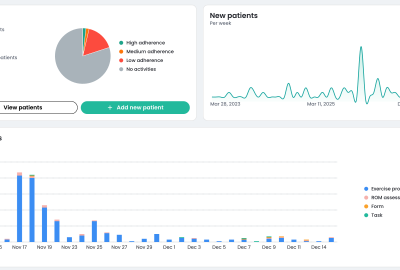The 2017 code set of the Current Procedural Terminology (CPT®) includes significant revisions to coding and descriptions for occupational therapy evaluation and re-evaluation services in the Medicine/Physical Medicine and Rehabilitation subsection. The codes for occupational therapy evaluation were expanded to include three levels of evaluative service (97165 – 97167), and a new code (97168) was created for re-evaluation. The two earlier codes for OT Evaluation, 97003 and 97004 were deleted and replaced with the new codes, apart from the addition of extensive guidelines. In the article, we explore the CPT code 97165 for low-complexity occupational therapy evaluation.
What is CPT code 97165?
CPT code 97165 belongs to the Occupational Therapy Evaluation CPT code set of 4 CPT codes: 97165 – 97168. It is used for claiming low-complexity OT evaluations. An occupational profile, medical therapy history, and a physical assessment employing low-complexity clinical decision-making are required for claiming reimbursement under 97165. A therapist typically spends 30 mins face to face with the patient and/or the family. But the time spent is neither a requirement nor a limit. The CPT code choice is determined by the level of service based on assessment complexity.

The procedure and documentation for 97165
The procedure for 97165: Occupational therapy evaluation of low complexity includes the following steps:
Occupational profile and client history (medical and therapy)
The therapist performs an initial evaluation which includes a brief medical and therapy history of the patient, along with the areas of concern for the current problem. The occupational profile sheds light on the patient’s work history and experiences, daily life, interests, values, and needs. The patient’s issues and concerns about performing occupational work including activities of daily living [ADLs] are identified as part of the profile. The patient’s current problems, the reasons for referral, and their goals of treatment are also determined. The occupational profile of the patient is used by the therapist to frame the evaluation of the patient. Using the occupational profile, standardized tests and measures, and documentation of a patient’s functional concerns the therapist can communicate the full scope of their evaluation.
The occupational therapist reviews the patient’s medical and therapy history to understand any current problems (eg, recent fracture) as well as what caused them. The amount and type of history reviewed will depend on what the occupational therapist needs to know about a particular patient to continue with the assessment and possibly develop a treatment plan.
Assessments of occupational performance
The second component of an evaluation that must be considered is the assessment and identification of occupational performance deficits. Performance deficits are defined by an inability to complete activities because of a lack of skills in one or more categories (such as physical, cognitive, or psychosocial difficulties). They refer to problems with activities or occupations, such as bathing, dressing, medication management, and meal preparation that limits the client’s ability to engage in social and occupational activities. It is necessary that the lack of skills or limitations in physical, cognitive, or psychosocial areas be linked to the performance deficits that result in activity limitations or participation restrictions.
An assessment that identifies 1-3 performance deficits (ie, relating to physical, cognitive, or psychosocial skills) that result in activity limitations and/or participation restrictions falls under 97165: low complexity.
The therapist’s clinical judgment, taking into account the needs of the patient, expectations regarding treatment outcomes, and overall complexity of presentation, determine how many deficits are identified in an assessment.
Clinical decision making
An analysis of the occupational profile and data collected from problem-focused assessment tests is done. If the assessment presents no comorbidities that affect the occupational performance, then the level of clinical decision-making required is considered low and a limited number of treatment options are considered. Treatment options could typically include one or more of the several approaches within the OT framework, namely – create, promote, establish, restore, maintain, modify, and prevent.
Development of a plan of care
The therapist and client must work together to decide on an appropriate treatment plan, taking into account medical history and performance deficits. For example, there are limited treatment options following an orthopedic intervention such as a shoulder arthroplasty or an open-reduction internal-fixation (ORIF) of the upper extremity. The therapist in this case aims to restore the functions of the joint, in order to alleviate any performance deficits. [1]
How to assess the complexity of evaluation?
Understanding this CPT code group is important to claim Occupational Therapy Evaluation reimbursements accurately. It is therefore important to note that identifying and reporting the complexity level of an evaluation focuses on the first three factors: profile and history, assessment, and clinical decision-making. Documentation of these three components is required to substantiate the coding choice. The plan of care must reflect the overall assessment, diagnosis, and evaluation code selected by the therapist. The therapist’s documentation should include an assessment of each component, in the context of the entire evaluation. In order to be classified as a higher level of evaluation, all three components must be evaluated at that level.
The new occupational therapy evaluation codes (97165-97168) are described in the language and guidelines derived from AOTA evidence-based clinical practice guidelines and the Occupational Therapy Practice Framework: Domain & Process (2nd Edition) [OT Framework], which is a foundational document that sets forth the approach, structure, and language of occupational therapy [2]. Hence, this alignment between CPT coding and clinical practice optimizes patient care.
[WPSM_AC id=1866]

